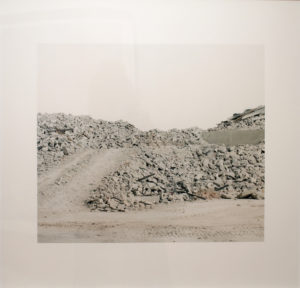July 12, 2012—August 24, 2012 | Reception Thursday, July 12, 2012
Grounded, an exhibition of select photographs from artists Oliver Boberg, Amir Zaki, Bing Wright and Steve Davis, explores the psychological impact of negative space in photography. With an emphasis on sweeping fields of negative margins combined with tonal saturation that serves to establish a tense relationship between foreground and background, the pictures presented in this exhibition are especially affecting. Each work balances its subject with its metaphysical afterthought, while conserving an equally compelling, unified composition.
Steve Davis
Steve Davis is a photographer based in the Pacific Northwest who takes both landscape and portrait photographs. His images always reference a social idea or group of people, whether that is the social and physical landscape of Washington or contemporary hippie culture. Often his photographs depict those on the fringes of society, in order to raise awareness and bring images of forgotten groups of people and landscapes into art spaces.
Steve Davis is the Coordinator of Photography and Media Curator at The Evergreen State College in Olympia, WA. Davis was twice the recipient of the WA Arts Commission/Artist Trust Fellowship. His work has appeared in the New York Times Magazine, Harper’s, and Russian Esquire. His photographs are in the collections of the Museum of Fine Arts, Houston, The Haggerty Museum of Art, George Eastman House, the Seattle Art Museum, the Tacoma Art Museum and the Musée de la Photographie in Belgium.
Bing Wright
Wright has always been fascinated by the correlation between the photo and a mirror, both being silver based picture planes. At the beginning of his artistic career, Wright was exposed to the potential of the medium by John Szarkowski’s legendary exhibition Mirror and Windows in 1978, which reconstructed the framework of the photographic image as a two-dimensional pictorial surface into a conceptual space. With a postmodern perspective of the photographic image, the medium expanded into diverse practices that continue to reorient our relationship to photography.
Bing Wright was born in Seattle in 1958 and received a Bachelor of Arts in Art History from Columbia University, New York. His work been shown in exhibitions at the New Museum, New York; White Columns, New York; the Queens Museum of Art, New York; and the Tang Museum and Art Gallery, Saratoga Springs, among others. His work is in several public collections, including The Museum of Modern Art, the Portland Art Museum, the Seattle Art Museum, Goldman Sachs, JP Morgan Chase Bank, and Citigroup. Wright recently curated an exhibition of 1970s photography from the collection of the Washington Art Consortium. He lives and works in New York City.
Amir Zaki
A firm believer in the transformative power of the photographic image, Zaki images are rooted in the history of the medium and uses it to shed light on the means of representation. Over the last 16 years, Zaki has pushed the physicality of the photograph’s two dimensional construct, allowing it to exist on its own and also exploring its own object-ness. In order to capture and record the original site, Zaki’s representations depict the complexity of place in terms of interactive evolving experience, an ongoing ecological intervention. The artist responds to the shifting contemporary landscape where nothing is permanent, constructing his own visual language to illustrate an entire mythology of place.
Amir Zaki lives and works in Southern California. He received his MFA from UCLA in 1999 and has been exhibiting nationally and internationally since graduating. He is a full professor at the University of California at Riverside. His work is included in many museum collections including the Hammer Museum of Art, Los Angeles County Museum of Art, New Museum of Contemporary Art, Orange County Museum of Art, Santa Barbara Museum of Art, and the Whitney Museum of American Art, among others.
Archival Pigment Photograph
73 3/4″ x 22 5/8″
Ed. 1/5
Inquire about this work



